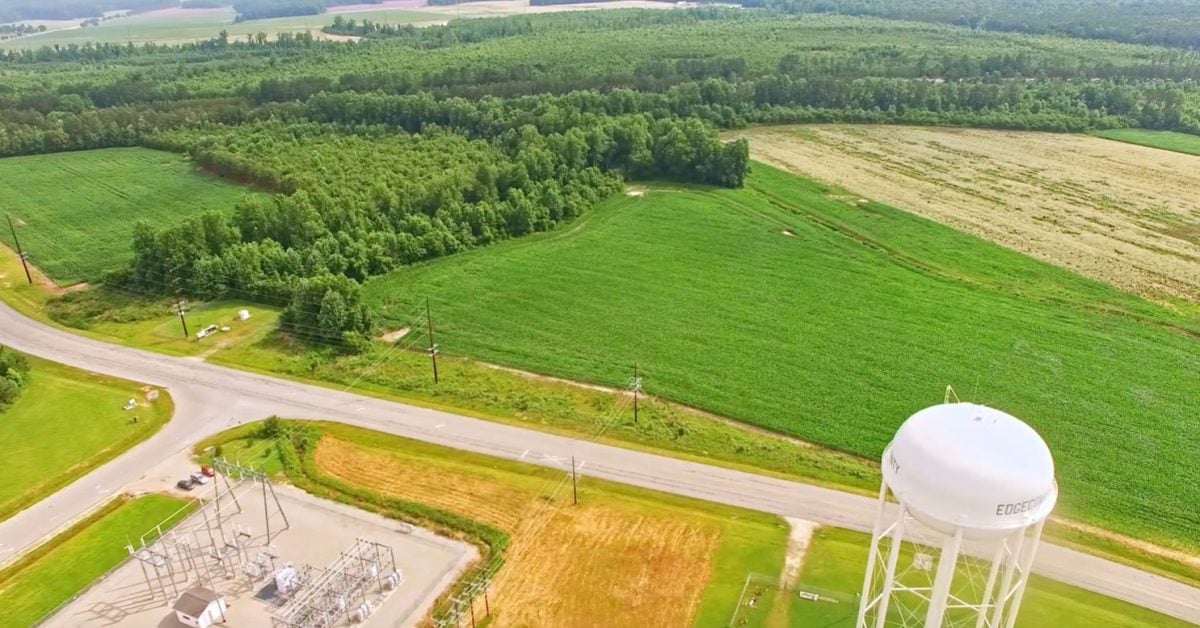- cross-posted to:
- northcarolina@lemmy.world
- energy@slrpnk.net
- cross-posted to:
- northcarolina@lemmy.world
- energy@slrpnk.net
Grid storage only. But still cool
More grid storage means more capacity for renewables.
Exactly. Renewables plus grid storage is the way to ditch fossil fuels
You say that as if solving grid storage wasn’t one of the most important problems humanity faces right now.
You will almost certainly see sodium-ion in cars. The Na batts already manufactured have a similar Wh/kg to Li batteries in EVs today. That’s because Li has progressed further, and it takes a few years for new batteries to go into actual EVs. Manufactures don’t necessarily use the top of the line batts, either, for cost or availability reasons.
If you feel a VW id.4 or a Hyundai Ioniq has sufficient range right now (or could have sufficient range if charging infrastructure was a better), then an Na batt will also be good enough. It’ll also be cheaper. Those cars come off the assembly line with Li batts that are similar to the 160 Wh/kg that Na batts out of CATL were doing in 2021.
I admire your optimism and I hope you’re correct. At least with the little “city commuters” it probably even makes sense. But lithium battery tech also continues to improve – so catching up with 2021 is great, but the goalposts keep moving.
There will be an absolute limit coming from physics and chemistry, and lithium is a smaller, lighter ion. In the theoretical limits, it will absolutely be the winner.
But from a practical perspective, if Na-ion becomes light enough and (more importantly) cheap enough, it will probably win the economic game in the longer term.
Plus we can make Na-ion batteries in-situ elsewhere in the solar system without having to first finding concentrations of lithium – so high tech space industry stuff will likely more towards Na-ion, which will fund some development.
Goalposts keep moving, but perhaps not in a useful way. A 10,000 Wh/kg battery would be amazing, but EVs will get along fine with 160 Wh/kg. Especially if they’re cheap and made of abundant materials.
We’re desperately in need of low-cost grid storage for all our high capacity renewables. Especially down in spots like Texas, where wind energy will send prices into the negatives for a few hours a day, then natural gas collusion jacks prices up into the quadruple digits, an industrial scale battery system would flatten the price curve.
I concur. The problem with Texas is that regulators and legislators are in the pockets of said natural gas companies. So it’s very likely to occur in the places that don’t need it before it occurs in Texas. Get on it, Vermont! ;)
Sodium-ion batteries are gaining attention as a potential alternative to lithium-ion batteries for EVs, mainly due to their cost-effectiveness and abundance of raw materials. Sodium is more readily available and less expensive than lithium, making it an attractive prospect for scaling up EV production.
I don’t know why they said this — they really aren’t a viable alternative for weight-sensitive contexts at all. Their density is only abut 60% that of Li-ion batteries, and that isn’t even getting into solid-state Li batteries which are even more dense. If weight isn’t an issue, like for home or grid backup storage, they’re fine. For cars or bikes, not so much.
There is already a Chinese EV that uses a sodium ion battery, the JMEV EV3.
It’s a tradeoff of range vs price. The EV3 only has 155 miles of range, but thanks in part to its sodium ion battery it costs only $9220 new. Which is a price that will probably drop even more as more sodium ion plants come online and economies of scale kick in.
EDIT: even if your commute is 40 minutes long, driving 60 MPH the entire way, that range is enough to get you to work and back using a little more than half your charge. Given that it’s also generally cheaper to charge an EV than pump gas, and there’s less maintenance costs, I think there’s absolutely a market for such a car.
The volumetric energy density is 60% of lithium ion batteries, but the energy density per kg is more like 75% since the batteries are lighter. Assuming that scales to the ev range, that’s probably sufficient for a lot of use cases.
I could see it being useful for semi trucks where volume isn’t as much of an issue, especially if the batteries are hanging under the trailer.
I don’t know why they said this — they really aren’t a viable alternative for weight-sensitive contexts at all. Their density is only abut 60% that of Li-ion batteries, and that isn’t even getting into solid-state Li batteries which are even more dense. If weight isn’t an issue, like for home or grid backup storage, they’re fine. For cars or bikes, not so much.
Your explanation is valid for vehicles that have 100% of their battery be something other than Sodium based, and also have a use case that requires long or intermediate range. That isn’t all use cases. Vehicles that drive a lot, but never cover much distance would still be valid use cases for 100% sodium. 100% Sodium Ion powered EVs started rolling off assembly lines in Dec of 2023. Alternatively 100% Sodium Ion could also be for things like fork lifts or Semi trucks that move storage containers from a cargo ship to a storage location within a mile and repeat this trip dozens of times a day.
Other use cases would be where a car has some sodium batteries and some lithium based ones. The sodium batteries could serve most of the “wear and tear” of short trips, with a second smaller lithium back available to augment overall range which is not used as often.
Other use cases would be where a car has some sodium batteries and some lithium based ones. The sodium batteries could serve most of the “wear and tear” of short trips, with a second smaller lithium back available to augment overall range which is not used as often.
This is a neat idea, but wouldn’t solid-state lithium be far, far better for that purpose?
AFAIK SS lithium have huge price tag, at least for now.
Not really — portable batteries are already on the market and aren’t that much more than conventional Li-ion.
Are they? Good to hear. However Samsung is starting mass production for EVs and they are targeting initially the most expensive segment. But let’s see once they start producing them.
Sodium batteries are a lot cheaper, and the materials are easier to come by
Maybe in the sense that there’d be less competition for the relatively rare materials needed for EV batteries?
As long as the locals benefit and the environment doesn’t get destroyed ( which polluters frequently get away with due to the Republican legislature, see https://en.wikipedia.org/wiki/2014_Dan_River_coal_ash_spill ) this is a sensible place to put industry. It is more stable environmentally than many other regions in the country where expensive industrial infrastructure is being placed (like the Southwest), has available labor for manufacturing, and is well connected to transportation.
Everything bad you expect is going to happen.
I’m going to assume the community gets poison while the factory cranks out batteries, and delivers few jobs or taxes?
I’m also going to assume the community recognizes this but hopes to improve their area with new education and other investment? Or a lot of people were bribed ?
Am I wrong ?
A small town near out together an incentive package for a wind farm that was shopping itself around the country.
They imminent-domained hundreds of tiny plots of land from local farmers so a billion-dollar wind installation could go up without paying the farmers, and in return the city received $200,000 it used to paint a school, and the peoject it created a whopping 2 full-time jobs after construction was completed.
And the mayor acted like it was a victory.
if you think factories are bad wait until you find out what amazon gets away with. They can literally break fire code because nobody cares enough to do anything about having the worlds biggest retailer warehousing in your county/state.
Of course. The pork industry in NC is exactly the same. Tobacco as well.
NC has a strong Republican majority in the government with a fairly weak Democrat governor. They make bad decisions. I’m not sad I left.
Yeah, probably wrong. There’s not a bunch of third party info on the environmental impact this factory will have, and no evidence anyone was bribed. If it makes you feel better, this isn’t their first factory and I couldn’t find any negative news about that factory either. Community leaders were supportive though, and a bunch of jobs were created.
I did find some articles about the positive environmental impact sodium batteries have from production, to relative ease of recycling, if that makes you feel better.
An issue near me: a major plant is fined every time they exceed emission limits and those fines go back to the community.
Yes.
cool to see that we’re finally getting local production of these things here in the US.
Great, finally some Sodium batteries that are not made in China.
Hopefully this time NC’s gridscale battery factory wont go bankrupt when the Russian oligarchs founders take the money and run. https://www.charlotteobserver.com/news/business/article167970747.html
Archive: https://archive.ph/JUBRF
“It’s facilitated in part by a Job Development Investment Grant from the North Carolina Department of Commerce, which gives cash grants directly to a company when it creates jobs and invests in the state.”
I wonder if this makes it kind of like, although not equivalent to, a project labor agreement. I know North Carolina is a right to work state.
It would be nice for there to be union presence on a job this large. However small the chances of that may be.
How do you create gigawatts of batteries. Wouldn’t it be something more like gigawatt-hours of batteries?
Yeah, it’s probably GWh, W and Wh are frequently interchanged.
yes
Yeah you’re probably right.
Although the peak power you can withdraw from a battery is also an important factor, the energy capacity would be the expected size to be reported here.










